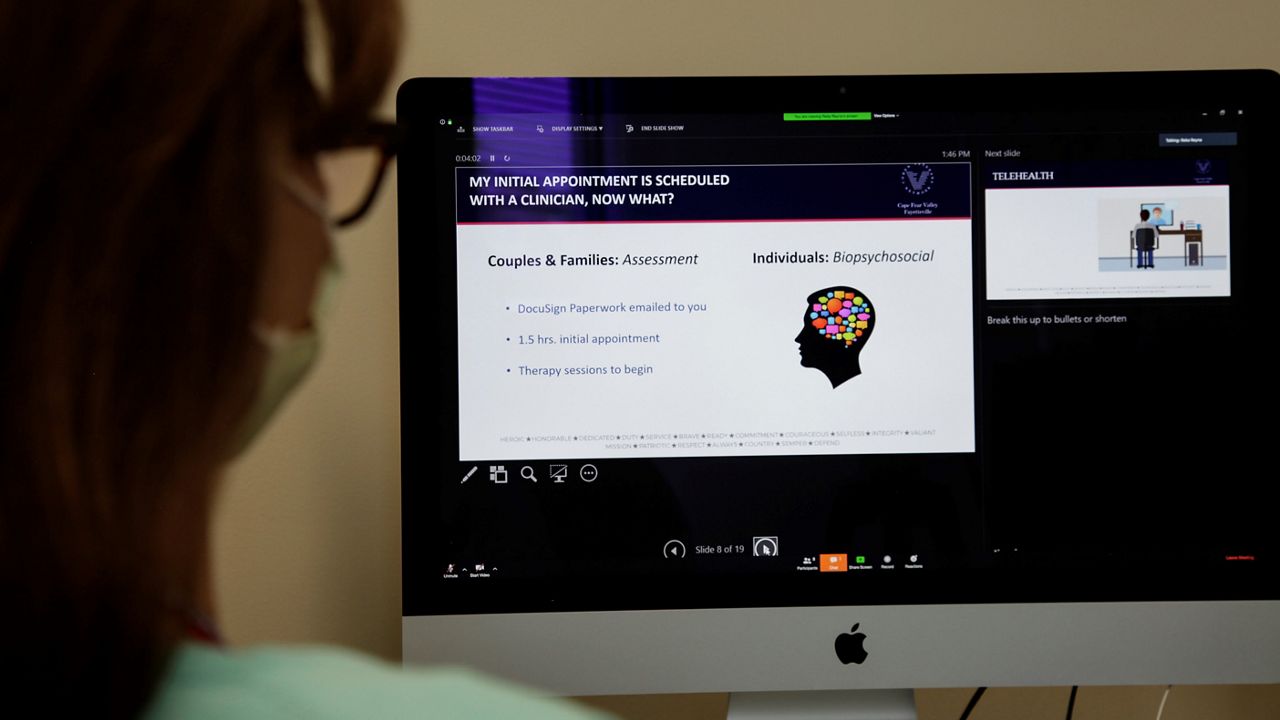LOS ANGELES — As the COVID-19 public health emergency ends Thursday and the term “post-COVID” becomes more commonplace, many are reflecting on the changes the pandemic required. Perhaps one of the greatest transformations COVID created is in the mental health space.
When life went online during the early stages of the coronavirus outbreak, health care providers turned to telehealth services to meet the growing demand of people seeking care and maintain relationships with current clients. At least four-in-ten U.S. adults have experienced high levels of psychological distress at some point during the pandemic, but with access to in-person care severely limited or out of reach for many Americans, virtual visits skyrocketed in popularity.
Though schools, workplaces and restaurants have returned to a new normal, mental health experts don’t see the virtual landscape of mental health changing.
“I think it’s here to stay,” said Cheryl Somers, a licensed professional counselor. “I know in our own practice, we recently closed our in-person office… it just wasn’t cost effective anymore, like we weren’t seeing enough clients in person to make it worthwhile to pay the rent.”
While the doors to their office closed, their laptops and phone lines stayed open — with more clients than ever.
Somers’ practice exclusively served young adults pre-pandemic, but expanded last year to include adults, college students, parents and others. The growing demand for mental health services, Somers said, was a driving force for the expansion.
“There were just so many more people seeking services that we wanted to tap into a bigger market,” she said.
Telehealth has many benefits, mostly of convenience, including reduced or eliminated travel time, shorter wait times to see a provider, access to a broader network of specialists and the opportunity to seek care from the comfort of your home. But it has its limitations.
Some clients, especially younger students already experiencing zoom-fatigue, were eager to return to in-person sessions. And certain presenting problems that require more emotional intensity — like depression, grief, deep trauma and others — Somers says, are more successfully tackled in-person.
“I guess any kind of therapy where your goal is really to walk with (a client) through something where you actually have to kind of feel the weight of what they’re feeling,” she explained. "You don’t get that through a screen.”
The pandemic also changed the public perception and conversation surrounding mental health.
“We saw mental health become top-of-mind for everyone, and that resulted in a seismic shift in how employers, insurers and university and government institutions respond,” said Laura Magnuson, the vice president of clinical engagement at Talkspace and a licensed associate marriage and family therapist. Post-COVID, Magnuson says people are coming to expect their mental health needs to be treated the same way as physical health needs — like a covered benefit.
Talkspace, an online therapy platform, launched nearly a decade before the onset of COVID, offering a full-spectrum of digital mental health services. Many associate telehealth with a Zoom call, and while that is common, Talkspace specializes in a variety of “asynchronous modalities, including text or audio messages with a licensed therapist on a secure platform.
A recent survey within the Talkspace community also points to a changing sentiment around seeing a therapist. Of respondents, 65% say that they’re more likely to discuss their mental health with their friends than they were before the pandemic, and 81% believe people are more open to going to therapy than they were pre-pandemic.
“With the adoption of telehealth, it also opened up more people to trying therapy,” Magnuson said. “Around 50% of the people we see are brand new to therapy.”
Somers said the rise in popularity has shifted the ideology surrounding therapy away from a deficit conversation to a wellness conversation. But now that people see therapy as just one more step to add into their wellness routine, she said some clients aren’t making it a top priority.
“I’m seeing a lot more of like, ‘I’ll sign up for a few sessions and then quit,’ or making an appointment and then not even showing up for the first session,” Somers said. “The good thing is a lot more people are seeking services, but that now also puts us kind of in the same category as going to the dentist or, you know, getting a medical check-up.”
But therapy is not a one-and-done thing, she explains, it’s a growth process. You have to practice what you’re learning. Somers likened it to seeing a personal trainer — you may have a session once a week, but you won’t see a difference unless you’re putting in the work on your own multiple times a week.
The public health emergency may be ending, but the U.S. is still facing a mental health crisis.



